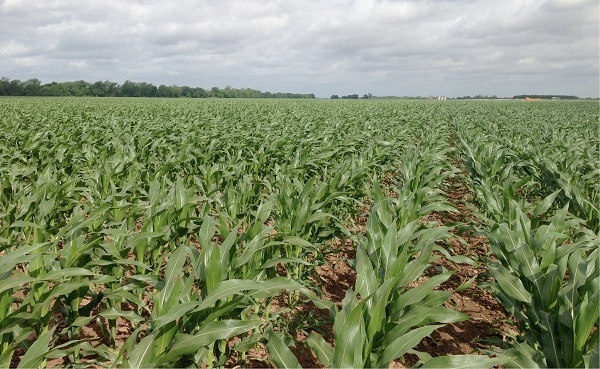
As if the relentless drought weren’t bad enough, large sections of the Southwest saw temperatures soar into the high 90-degree range this week with several locations topping 100.
The combination of high temperatures, high wind and continued drought has wreaked havoc on much of the Southwest wheat crop and puts summer crops in jeopardy as farmers hope for planting moisture. And it’s early May.
The latest Texas Drought Monitor map shows 74 percent of the state in moderate to exceptional drought status and more than half the state is suffering severe “or worse” drought status.
That level is 5 percentage points above last week’s report and significantly greater than the 49 percent of the state in drought status three months ago. But last year at this time, 92 percent of the state was in drought.
The situation is no better in Oklahoma where Randy Boman told participants at a recent Tipton Valley Research Center field day that southwest Oklahoma had recorded just 4.81 inches of rain since Oct, 2013. “And that precipitation came in 39 separate events,” he said.
For more on SW weather and crop conditions, please check out Southwest Farm Press Daily and receive the latest news right to your inbox.
Most of those rain events brought little more than traces of rain. “One rain in December brought almost an inch,” Boman said. Since January, 2013, the area has received 20 inches from 89 separate events. “The last time we were not in drought was November, 2010,” he said. Much of the region has been in exceptional drought for most of that time.
Texas crop and weather
Robert burns, Texas AgriLife Extension media specialist, reports in his weekly Texas crop and weather update that most of the grain production areas of the state are experiencing drought.
He wrote that grain crops in the upper Gulf Coast, Central Texas and North Texas started off the year with much better moisture conditions than those in the High Plains, but it’s the “same old song and dance” there when it comes to moisture, according to a Texas A&M AgriLife Extension Service expert.
“We need help from Mother Nature pretty soon to maintain yield potentials,” said Ronnie Schnell, AgriLife Extension state cropping systems specialist, College Station.
The upper Gulf Coast, the Blacklands and North Texas had good moisture at planting times, but most of the grain crop needs a good rain, he said. Planting was in early March in the Central and North regions and mid- to late-February in the Gulf Coast area.
Areas in the northern Blacklands have received a little more rain than the Central and Gulf Coast region, Schnell said. Crops in all three areas are still OK, but won’t stay that way long without rain in the next week or so.
Freezes delayed planting in some areas, and late freezes damaged corn in the northern Blacklands and resulted in replanting of other crops, but the real issue remains moisture.
“Over the past three months, the area of the state under at least moderate drought has increased from about 50 percent to almost 75 percent,” Schnell said.
More information on the current Texas drought and wildfire alerts can be found on the AgriLife Extension Agricultural Drought Task Force website at http://agrilife.tamu.edu/drought/ .
The Drought Monitor also shows intensifying drought across much of the Western U.S., including large swaths of Texas, Oklahoma, New Mexico and Utah. The map shows virtually all of Arizona, Nevada, California and Oregon with drought either persisting or intensifying.
The rest of the country remains drought-free or with diminishing drought status.
About the Author(s)
You May Also Like






